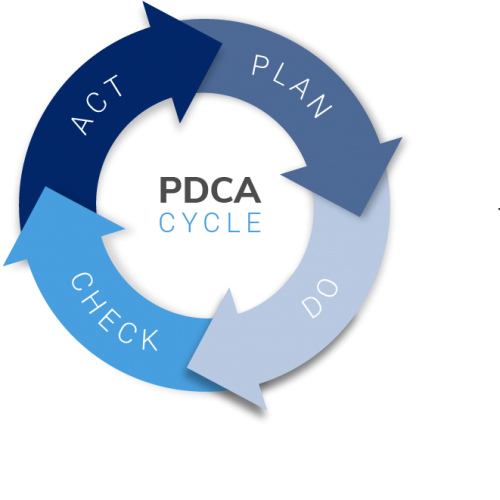
Tired of working to fix issues with your organization’s systems and processes over and over again, but achieving the same disappointing results? This can be frustrating, but it’s important that you never stop working to make improvements. If you follow the steps of the Plan-Do-Check-Act cycle effectively, the work you put in to improve your systems will have a much more desirable, and impactful outcome. With the right tools, navigating this cycle can be easier.
The PDCA (Plan-Do-Check-Act) cycle is an iterative process that brings a management system closer to the desired result each time the cycle is completed. This cycle is regarded as a management system tool that can be used by organizations for multiple purposes; to achieve continual improvement of existing management systems, as well as implementing new management systems for the first time. All four components of the PDCA cycle are equally important for making impactful improvements to your management systems, and critical in taking a risk-based approach to quality management.
Plan
During the plannning phase of the cycle an organization should identify processes and risks and assess them in terms of their impact within the overall system. The planning phase is also used to highlight opportunities and establish objectives for improvement in accordance with set requirements. Whether it is an entirely new system being implemented, or an existing system, tools such as the turtle diagram are helpful for process identification and drilling down to the points where improvement is critical.
Do
During the “Do” phase of the PDCA cycle the identified opportunities for improvement are implemented as planned. This is where the proactive, and preventative approach to risk is applied in the operations of a management system. There are various steps, and things to consider before implementing changes in any management system. Before carrying out the objectives or improvements determined during the planning phase, review these 7 things you should consider before implementing changes to your management system.
Check
After the implementation of changes, you should always monitor, and measure activities and processes with regard to policy to see how your system is performing. By carrying out well-planned internal audits of your various systems against specific requirements and objectives identified during planning, you will allow for impactful, and continual improvement at any point in the life cycle of your system. A management system Gap Analysis tool will help you compare your systems at their current state with the requirements of specific standards and identifying any non-comformities or potential risks to remedy.
Act
Once you’ve identified non-comformities or risks with the changes you implemented, it’s time to take corrective action. You’ll want to communicate the results and devise a new plan, thus restarting the cycle.
Regardless of the industry you operate in, whether you provide products or services, or the size of your organization, it's critical to establish, and continually improve, a quality management system (QMS) that aligns with your business strategy.
Run a health check on your current QMS using the ISO 9001:2015 Quality Management System Gap Analysis Tool, and identify neccessary adjustments to make to meet the standard.
Regardless of the industry you operate in, whether you provide products or services, or the size of your organization, it's critical to establish, and continually improve, a quality management system (QMS) that aligns with your business strategy.